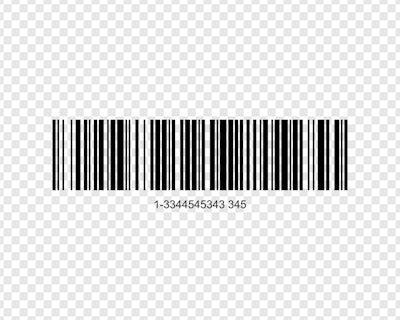
Supply chains had been straining to meet increasingly complex industry and consumer needs even before the COVID-19 pandemic – the last three years only exposed and exacerbated the challenges. Material shortages, manufacturing interruptions, volatile markets and rapidly changing consumer demands all converged and magnified existing struggles.
Imbalances between supply and demand for many consumer and industrial products grew out of the crisis, and procurement of goods became more difficult. Combined, these issues contributed to unprecedented port congestion, retailer inventory shortages, overcorrections (now leaving many with excess inventory) and widespread delivery delays. Additionally, many of these disruptions were compounded by a pervasive lack of supply chain visibility – the inability to obtain accurate, real-time information about product inventory and movement through distribution channels.
Now, as manufacturers and transportation lines recover, backlogged inventory has intensified retailers’ struggles. In short, stores didn’t have enough of certain products, and now they have too much. To make matters worse, consumer needs continue changing. Demand has disappeared for many of the products consumers wanted six months or a year ago. Beleaguered retailers, now overloaded with unwanted products, are forced to apply drastic discounts and incur additional losses.
If excess inventory issues weren’t enough, companies are also grappling with inflation, which is the highest it’s been since 1982. While retailers drop prices to move existing products, the cost of new materials is going up, reducing gross margins. Amid threat of recession and rising costs, companies’ ability to monitor and track inventory is critical to avoid overstock issues.
Addressing a multitude of supply chain issues, particularly visibility, is now one of retailers’ and manufacturers’ hottest pain points.
Industries are collaborating to improve supply chain performance by enhancing automation and visibility so stakeholders can “see” accurate inventory levels, product locations and transactions recording a product’s journey from source to point of sale – all in real time. With implementation of digital technology and global data standards, far more effective supply chain operations become possible.
Visibility challenges lead to loss
Supply chain modernization is essential. With many companies’ fragmented, proprietary data systems or paper-based record-keeping, achieving timely, accurate supply chain visibility has been a real challenge. Inability to ascertain product location confounds retailers’ inventory management and allows merchandise to “go missing” and become virtually untraceable in the supply chain, losing retailers even more revenue. Often, retailers don’t detect the loss until the product fails to arrive, throwing off inventory models and forcing them to order more.
Consider the Ever Given – the cargo ship that blocked the Suez Canal with hundreds of other ships stuck behind it, wreaking havoc on global supply chains. Companies that knew which ships had their cargo were able to quickly re-route shipments to minimize their vulnerability. The companies hit hardest were those that lacked visibility.
The solution to the supply chain’s visibility issues
Through a tumultuous few years, retailers, foodservice operators and healthcare providers discovered that inventory accuracy is crucial, especially to meet shifting fulfillment demands. Consumers now expect the ability to choose where they obtain goods: in store, curbside or at home. In an omnichannel universe, managing standardized, openly shared data in more forward-looking, dynamic ways is becoming table stakes. It’s a prerequisite for successful digitization of business – including use of technologies accelerating both supply chain and customer interactions. With a strong data foundation, supply chain teams can simulate issues and solve them before they cause major disruption.
Collecting and sharing up-to-date, accurate information is at the core of supply chain visibility. It can only work with standardized data that all trading partners can generate, exchange and understand. Industries are using GS1 Standards, the most widely used supply chain standards in the world, to provide the necessary data points, meet regulatory requirements where applicable (for example, in food and pharmaceutical products), enhance systems compatibility and make traceability more efficient.
GS1 Standards helps businesses uniquely identify companies, products, locations and assets in the supply chain and create a common language for sharing information between trading partners.
Unique product and location identification provides a clear picture
Using GS1 Standards, every product is uniquely identified with a GS1 Global Trade Item Number (GTIN) embedded in a barcode or radio frequency identification (RFID) tag. The GTIN is scanned at each location along the supply chain to automatically document the product’s arrival and departure, and to confirm inventory and transportation details. The locations – warehouses, distribution centers, stores, medical facilities and more – are also uniquely identified with Global Location Numbers (GLNs), making it possible to determine exactly where a product exists in transit or inventory, right down to a specific manufacturing plant, production line or retail shelf.
Data and systems interoperability is essential – and so is investment in the technology and systems required to process and exchange the standardized data. Success begins with diligent master data management to ensure accuracy and compatibility with the standards and trading partners’ systems. Companies relying on proprietary or paper-based inventory and ordering systems will need to update their infrastructure and perform a thorough data scrub, converting to digitized and standardized identifiers.
Data carriers
Product identifiers (GTINs) and other key information can be embedded in various data carriers affixed to a product or package. The Universal Product Code (UPC) is a linear barcode, used for over 50 years. It can be scanned at any location in the supply chain.
RFID technology takes visibility a step further. According to researchers at the Auburn University RFID lab, using RFID technology can improve inventory visibility up to 99%. RFID allows suppliers and retailers to track products seamlessly, without a line of sight; one scan can capture an entire pallet or truckload of like items.
Even more advanced data carriers are being used today to offer deeper product information. The two-dimensional (2D) barcode can carry a broader set of data to offer consumers detailed product information and digitally linked experiences. Today’s shoppers are clamoring to know more about products – from country of origin to fair trade, sustainability and more. In an industry initiative known as Sunrise 2027, retailers have committed to implement 2D barcodes at point-of-sale by 2027, enabling better supply chain management and equipping information-hungry consumers with the details they crave.
Supply chain of the future
Companies striving to become more agile are developing strategies to pivot when circumstances change. They are investing in technology like automation and artificial intelligence (AI) to create efficiencies; in fact, Gartner predicts that by next year, at least 50% of large global companies will be using AI, advanced analytics and other new technologies in supply chain operations. When based on a foundation of standards, the data derived from and used to leverage these technologies will help transform supply chains to become more successful and resilient.
As suppliers and retailers adjust to new marketplace realities, inventory management and product traceability will be focal points for realizing efficiencies. The supply chain of the future will be digitally driven with added benefits of automation and technology. It will rely on global standards for synchronized electronic information exchange between trading partners, allowing companies to better plan and adapt for optimized business management – and potentially realize greater revenues



















